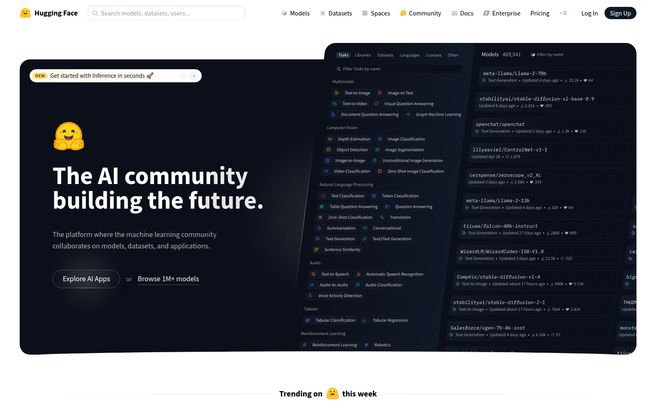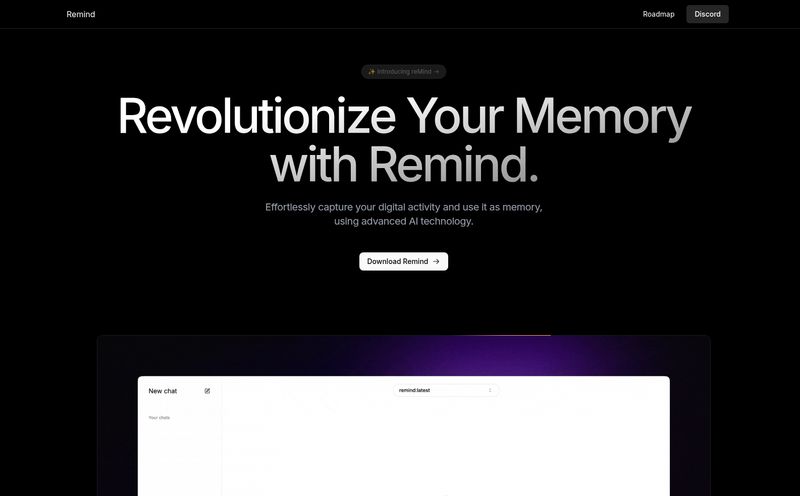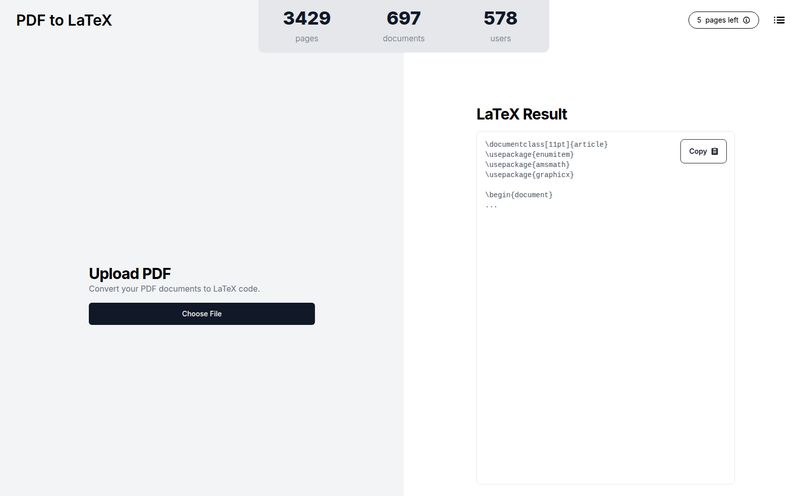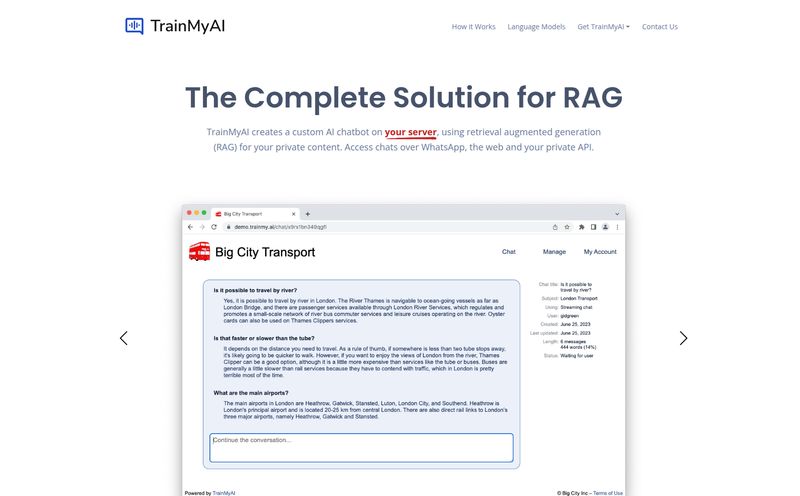The last couple of years in the AI space have been a whirlwind. One minute you're just getting your head around GPT-3, the next minute there are a dozen new models, techniques, and platforms screaming for your attention. It’s enough to give any self-respecting tech geek, let alone a seasoned SEO pro like myself, a serious case of FOMO. You blink, and you miss the next big thing. It's exhausting.
Amidst all this chaos, one name kept popping up in my feeds, in developer forums, and in hushed tones during client calls: Hugging Face. At first, I thought it was just another startup with a quirky name. But the more I saw it, the more I realized it wasn't just another platform. It felt different. It felt like a community. It felt like the new town square for everyone building with AI.
So I jumped in. And I've gotta say, it’s less of a tool and more of an ecosystem. It’s the messy, brilliant, collaborative, and wildly ambitious heart of the open-source AI movement. Think of it like a Grand Central Station, but instead of trains, you have AI models, datasets, and brilliant minds all coming and going. Let's break down what it is, why you should care, and whether it's right for you.
So, What Exactly Is Hugging Face?
If I had to explain it to my grandma, I’d say it's a giant library and workshop for computer brains. But for you, my fellow tech-savvy reader, the best analogy is this: Hugging Face is to Machine Learning what GitHub is to software development.
It’s a platform built on a philosophy of open science and collaboration. In a world where companies like OpenAI and Anthropic can sometimes feel like they're building powerful AI behind closed doors, Hugging Face is the polar opposite. It’s a place to share. You can find, upload, and collaborate on thousands of pre-trained models, the datasets used to train them, and even interactive demos of the applications they power.
The whole vibe is about democratizing machine learning. It's about giving everyone, from a student in their dorm room to a data scientist at a Fortune 500 company, access to the same powerful resources. It’s chaotic, sprawling, and honestly, a little bit beautiful.

Visit Hugging Face
The Core Features That Actually Matter
Okay, so it’s a big community hub. Got it. But what can you do there? When you peel back the layers, you find a few core components that make the whole thing tick. These aren't just features on a pricing page; they are the pillars of the entire ecosystem.
The Model Hub: A Treasure Trove of Pre-Trained Brains
This is the main event. The Model Hub is an almost incomprehensibly large repository of machine learning models. We're talking tens of thousands of them. Need a model that can translate Swahili to Korean? It’s probably there. Need one that can identify different species of birds from a photo? Check the Hub. Looking for the latest open-source competitor to GPT-4, like a fine-tuned version of Meta's Llama 3 or Mistral's latest? This is where you'll find it first.
It’s like a magical library where instead of books, you can check out a fully-formed expert on nearly any subject. And the best part? Most of it is free to download and use.
Datasets and Spaces: The Building Blocks and Showrooms
A model is nothing without data. The Dataset Hub is the pantry to the Model Hub's kitchen. It’s a collection of thousands of datasets that you can use to train or fine-tune your own models. It saves researchers and developers countless hours of data collection and cleaning.
Then there are Spaces. Oh, I love Spaces. This is one of my favorite parts. Spaces are basically a way to create and host live, interactive demos of your ML apps, right on the platform. You can build a cool app that summarizes articles or generates images, and with a few clicks, you can have a public URL to show it off to the world. No more fumbling with servers or complex deployment pipelines just to share a prototype. It's a game-changer for building a portfolio or getting quick feedback.
Transformers, Diffusers, and Other Open Source Goodies
Beyond the platform itself, Hugging Face is the steward of some of the most important open-source libraries in AI. You've probably heard of Transformers, the library that makes it ridiculously easy to use state-of-the-art models. Then there's Diffusers for image generation models, and Safetensors for a more secure way to share model weights. These aren't just tools; they're the standard. They are the plumbing that makes a huge chunk of modern AI development possible.
The Good, The Bad, and The Pricey
Look, no platform is perfect. As much as I admire what Hugging Face is doing, it's important to go in with your eyes open. I've spent enough time clicking around to have some pretty solid opinions on this.
The Good Stuff (Why I'm a Fan)
The community is everything. Seriously. When you get stuck on some obscure error at 2 AM, chances are someone in the Hugging Face forums has already faced it, solved it, and posted the answer. The spirit of shared knowledge is palpable. And the sheer convenience of having models, datasets, and demos all in one place... it's a workflow accelerator. It lets you stand on the shoulders of giants, instead of reinventing the wheel every single time. For me, that's priceless.
A Few Reality Checks
First off, it can be overwhelming for beginners. The sheer number of options can feel like drinking from a firehose. It's a classic kid-in-a-candy-store problem that can lead to choice paralysis. Where do you even start?
Second, while much of it is free, the powerful compute resources are not. If you want to host a popular Space or run a dedicated Inference Endpoint for a production app, those costs can add up. It's not necessarily expensive compared to rolling your own infrastructure, but you need to be mindful of teh costs. We'll get into the specifics in a bit.
Let's Talk Money: A Breakdown of Hugging Face Pricing
This is where the rubber meets the road for many of us. How much is this all going to cost? The good news is, Hugging Face has a very generous free tier, with paid options for when you need more power or control. Here's a simplified look, based on their official pricing page.
| Plan | Price | Who It's For | Key Features |
|---|---|---|---|
| Free | $0 | Students, Hobbyists, Researchers | Host unlimited public models/datasets, community support. |
| Pro | $9 / month | Individual Developers & Freelancers | Private repos, early feature access, more compute credits. |
| Enterprise | $20 / user / month | Teams & Businesses | SSO, audit logs, priority support, advanced security. |
| Compute | Pay-as-you-go | Anyone deploying apps | Pay for Spaces hardware (from $0/hr) and Inference Endpoints. |
The free tier is amazing for learning and experimentation. The Pro account is a no-brainer for any individual doing serious work. The Enterprise tier adds the security and admin features that big companies need to sleep at night. And the pay-as-you-go compute is like renting a supercomputer by the hour—incredibly powerful and flexible.
Who Should Be Using Hugging Face?
Honestly? Pretty much anyone with a passing interest in applied AI. But to be more specific:
- Students and Hobbyists: It's your playground. The free tier gives you everything you need to learn and build amazing projects without spending a dime.
- Data Scientists and ML Engineers: It's your workbench. Stop downloading models from shady links. Use the Hub for reliable, version-controlled models and datasets. It will save you time and headaches.
- Startups and Small Businesses: This is your unfair advantage. Leverage billion-dollar models for the cost of a few pizzas a month. Deploy prototypes in minutes with Spaces and scale with Inference Endpoints when you're ready.
- Large Enterprises: With the Enterprise Hub, you get the open-source collaboration your teams want with the security and compliance you need. It’s the best of both worlds.
My Final Take: Is It Worth The Hype?
Yeah, it is. Full stop.
Hugging Face has managed to do something remarkable: it's built a platform that is simultaneously a community, a library, a toolkit, and a deployment service. It has become the de facto hub for the open-source AI revolution. While the walled gardens of the big labs are impressive, the real, grassroots innovation—the kind that solves niche problems and empowers individual creators—is happening out in the open, and much of it is happening on Hugging Face.
It's not perfect, and the learning curve can be steep. But the value it provides, especially for free, is just staggering. It has fundamentally changed my own workflow for traffic analysis and trend prediction projects. If you're building, learning, or just curious about AI, you need to be there. It really does feel like you're building the future, together.
Frequently Asked Questions (FAQ)
- Is Hugging Face free to use?
- Yes, the core platform is very generous with its free tier. You can host unlimited public models and datasets, and access community tools for free. You only pay for private repos, advanced features, or dedicated compute resources.
- Can I run models directly on Hugging Face?
- Absolutely. You can run models through interactive widgets on model pages, build full applications in Spaces (which provides CPU/GPU hardware), or deploy them on dedicated, auto-scaling Inference Endpoints for production use.
- Is Hugging Face good for beginners?
- It can be a bit overwhelming at first due to the sheer volume of content, but it's also one of the best places to learn. The documentation, courses, and community forums are fantastic resources for anyone starting their AI journey.
- What's the difference between Hugging Face and GitHub?
- GitHub is for general-purpose code. Hugging Face is specifically optimized for machine learning. It has features tailored for ML assets like model versioning, interactive model cards, dataset viewers, and integrated compute that you won't find on GitHub.
- Can I use models from Hugging Face for commercial projects?
- Generally, yes, but you MUST check the license for each specific model or dataset. Most are released under permissive open-source licenses like Apache 2.0 or MIT, but some have restrictions on commercial use. The license is always clearly displayed on the model card.
- How does Hugging Face make money?
- They make money through their Pro and Enterprise subscriptions, which offer premium features, and by selling paid compute resources for hosting applications (Spaces) and deploying models (Inference Endpoints).



